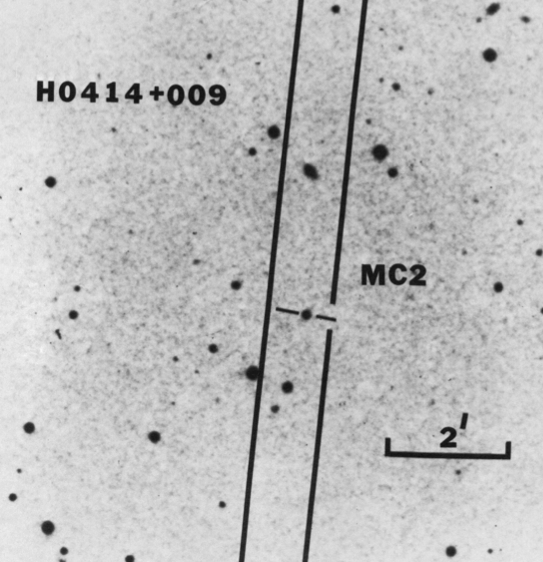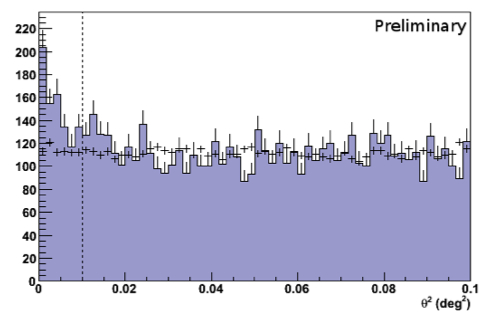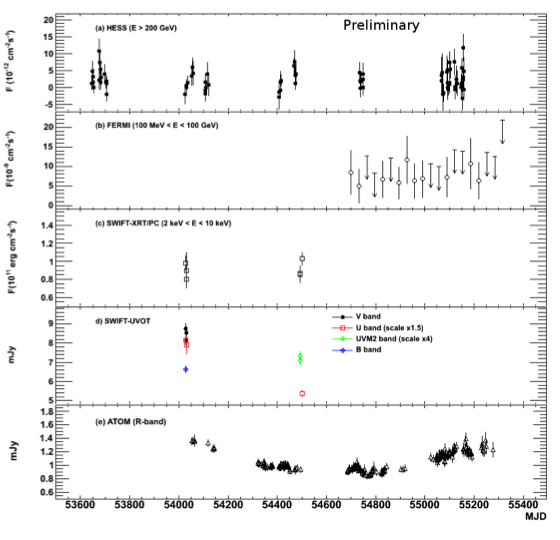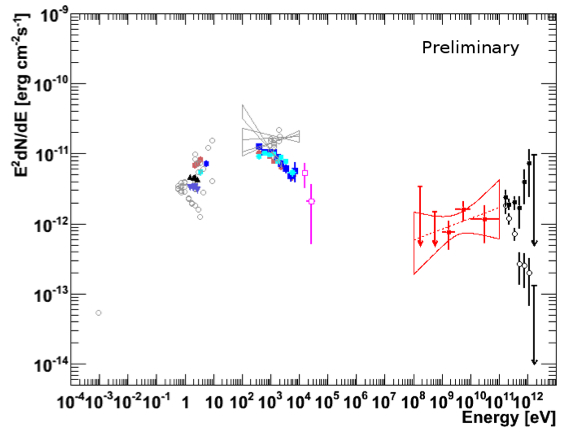Discovery of gamma-ray emission from the blazar 1ES 0414+009
July 2011

1ES 0414+009 is a blazar located relatively far away (for TeV sources), at a redshift of z=0.287. An elliptical host galaxy harbors a supermassive black hole of a few 10^9 solar masses. The object is seen in radio, optical (see top image) and X-rays, with an emission peak in at UV/soft X-ray frequencies. Based on the list of TeV candidate objects by Costamante and Ghisellini (2002), H.E.S.S. started to observe the object in 2005, continuing until 2009 for a total of 74 hours of observations. In parallel, X-ray and UV observations were carried out using Swift and optical observations with the ATOM telescope on the H.E.S.S. site. The Fermi-LAT instrument provided data at GeV gamma-ray energies.
In the H.E.S.S. data, TeV gamma-ray emission from 1ES 0414+009 is detected as an excess of 225 gamma-rays over a smooth background, corresponding to about 8 sigma significance (Fig. 1). The gamma-ray flux corresponds to only 0.6% of the flux from the Crab nebula. The energy spectrum of gamma rays is measured to about 1 TeV; the gamma-ray flux drops steeply with increasing energy, with a spectral index of about 3.5. In the Fermi-LAT data from August 2008 to May 2010, the object is also detected with 8 sigma significance, and a spectral index of 1.8. Within the large errors, no significant time variability is detected in the GeV and TeV energy domains; the ATOM optical data, however, show a long-term variation of the emission (Fig. 2). Fig. 3 illustrates the spectral emission over the entire frequency range, combining ATOM optical data, Swift UV and X-ray data, and Fermi and H.E.S.S. gamma-ray data. At the redshift of 0.287, at TeV energies gamma-ray absorption by interactions with the extragalactic background light is quite strong, see e.g. SOM Dec. 2005. Correcting the H.E.S.S. spectrum for the energy-depedent absorption (filled circles in Fig. 3) gives the interesting result that the intrinsic gamma-ray spectrum of this object appears to continue without break from GeV to TeV energies, representing a challenge to emission models.
Reference: "Discovery of VHE and HE emission from the blazar 1ES 0414+009 with H.E.S.S and Fermi-LAT", H.E.S.S. collaboration and Fermi-LAT collaboration, F.Volpe et al., Proceedings of the 25th Texas Symposium on Relativistic Astrophysics (Heidelberg, Germany, 2010), arXiv:1105.5114 and Astronomer's Telegram #2293 "H.E.S.S. and Fermi-LAT discovery of VHE and HE emission from blazar 1ES 0414+009", W. Hofmann and S. Fegan


